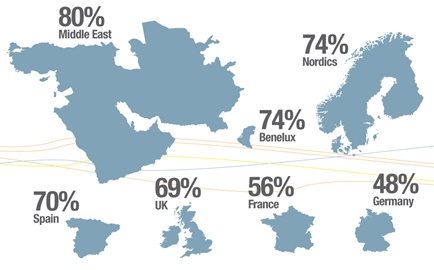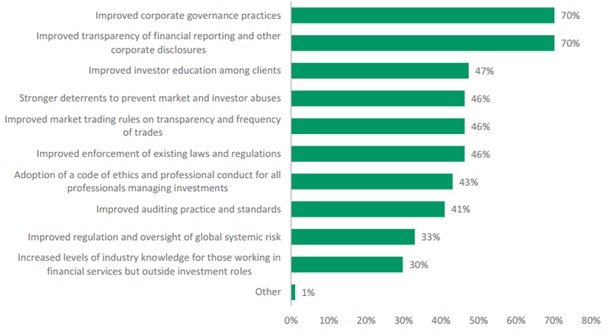- Small businesses can immensely benefit from incorporating CSR as a part of their overall business strategy.
- CSR activities can give a powerful message to your employees and in turn get a higher sense of belonging and loyalty to your project from them
- While it might not always be possible for SME’s to donate cash for such initiatives, many companies are deploying winning strategies to bolster their own contribution in kind, either through barter or by volunteering time to an existing CSR project initiated by another organisations.
- Engaging your suppliers can also amplify the impact of your CSR initiatives, while helping strengthen your relationships with them.
Should an SME owner embrace the concept and opportunity of getting involved and supporting Corporate Social Responsibility projects?
Some of you may have followed the news when it was announced last year that the US government was on the verge of defaulting on their debt. For average people around the world, this was one of the most confusing topics in recent times, considering the three tumultuous years of financial storms, earthquakes and tsunamis and let’s not forget, scandals.
What got my attention was that Apple Computer had within its own arsenal, stockpiled more cash in-house than the entire US government. Could it be that Apple CEO, Steve Jobs, once a scrawny geek of a kid who scrapped conventional wisdom to go out and innovate as an SME, to fulfill a dream that everyone should own a computer, could ride in like a white knight and save the whole country? Does charity begin at home?
Innovation and courage make it possible for an entrepreneur like Steve Jobs to support social programmes with millions of dollars each year. But what if you have a small business, and your focus is just on survival? What if you are struggling for loans or investors for your own project, and cannot even conceive the possibility of crossing the threshold of success and being able to give back?
When does it make sense to get involved as a small business and give back to your own cause or community? Well, for my part, and for many of the consultants on my team, we believe in looking for opportunities even before rolling out a start-up and building that into the mix as an integral part of the holistic structure of the entire business strategy.
To understand these reasons, one should reflect on some of the advantages of actually shaping your company culture with this type of commitment.
Powerful message
For a start, think of the message you will be sending out to your employees who will begin to realise that they are part of something more than just a 9.00 am to 5.00 pm job. This will often give them a higher sense of belonging and loyalty to your project and endeavor that makes them proud to say to total strangers, family and friends, what they do, who they are and why they love what they are doing now.
This, HR managers will tell you, is a powerful factor in human capital retention, and a recruitment magnet is always more powerful, when the team within, are all ‘game on’ and buzzed about the company. Among your clients, there is a percentage who will appreciate that some part of your margins which they contribute to, are recycled in a place that has a ‘feel good’ or worthy cause impression, again amplifying another good reason to do business with your company. This can grow to the next level, namely getting clients involved in social action projects, which are miracles of good CSR work in so many communities.
So, how much do companies need to invest in a CSR project, and how is it possible to do this before making a profit? The answer that I propose is that, although it’s nice to be able to donate cash, often, in the lifecycle of young start-ups, it’s not feasible. Many companies are, however, deploying winning strategies in order to bolster their own contribution in kind, either through barter or by volunteering time to an existing CSR project initiated by another organisation.
In the MENA region there are dozens of such organisations that have created CSR projects that would appreciate the focus and participation of one hour of someone’s time. This could range from having your team agree to spend half a day repainting a home for the elderly within your community, hosting a car wash to donate money to a needy school, creating a used book drive to donate to an orphanage. In fact, subject areas are endless and there is never enough. The unseen advantage in all of this is, there is a magical, intangible and yet amazing feeling of giving back to something or someone.
We, as business people, are able to feel a little taller in the process of this work, and at the same time, we have the advantage of not only putting a smile on the receiver’s face, but also spreading pride and significance amongst our teammates and our network for our participation.
Brand recognition
This is not thankless work either. Many participating SMEs are able to elevate their brand recognition and perception, by associating with causes that speak to their audience. This is a key factor of creating a strategy that works for your company. Find a CSR synergy that fits to the services or products that you deliver to the market. Build this into your overall business plan and connect with people on various levels as a result of your winning strategy. Be warned that there is a fine line between being genuinely involved in a CSR project and exploiting it so that you purely get a part of cash rewards.
It is better when companies form committees where employees and officers are part of the steering process, to make the best case scenario recommendations to the shareholders, about not only installing a CSR department, but guiding it and sustaining it. Another helpful hint if your SME adopts this practice is your key secret agents who can make your efforts even more powerful – your suppliers.
You will be amazed that when your team is committed, and has the ability to share a clear vision about what, why, and who, your suppliers will ask when and how they can help. Therefore, you, as the owner of an SME, are able to light a candle in your own store and by the power of passing the torch, ignite second and third party attention and support all around your organization’s CSR wagon.
And yes, remember, charity begins at your front door.
The article is written by Michael J. Tolan for Arab Business Review
To read more thought-leadership stuff by leaders from Arab Region, please visit Arab Business Review














